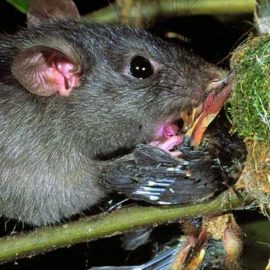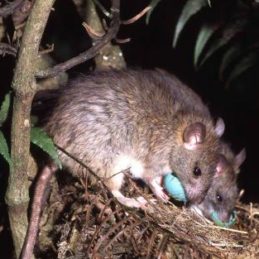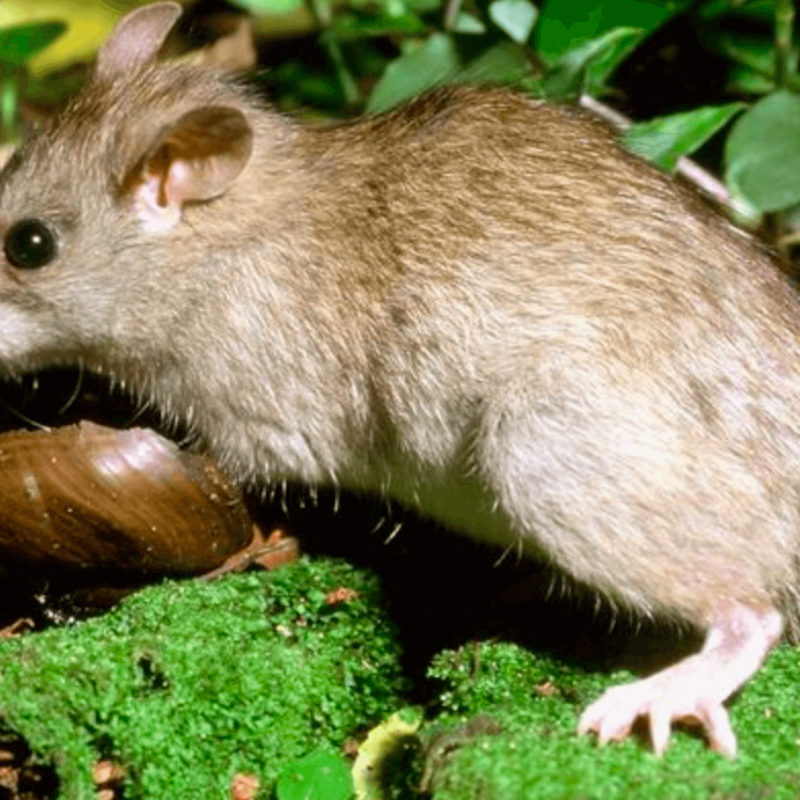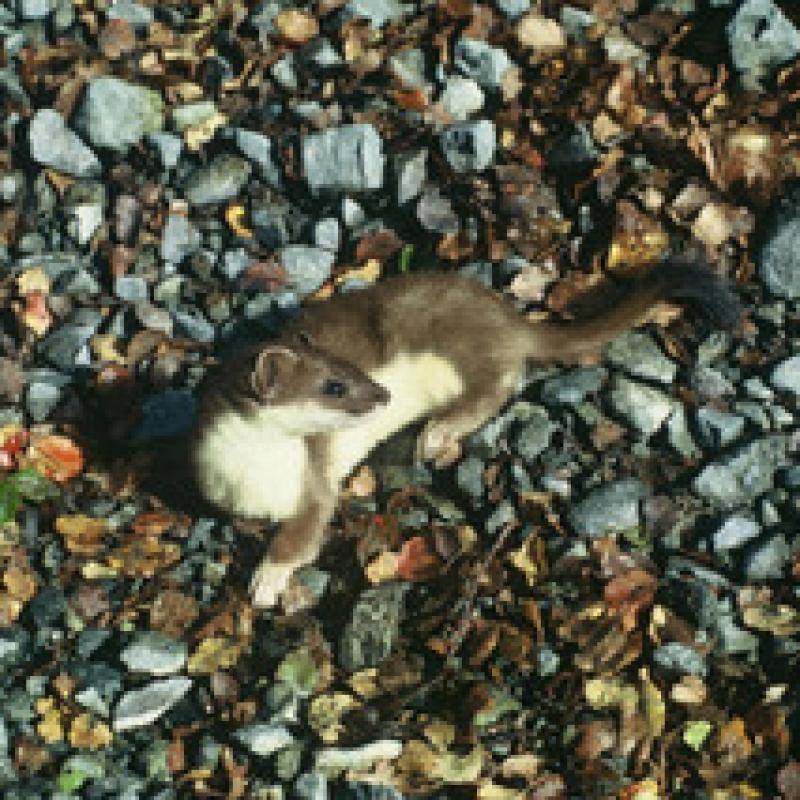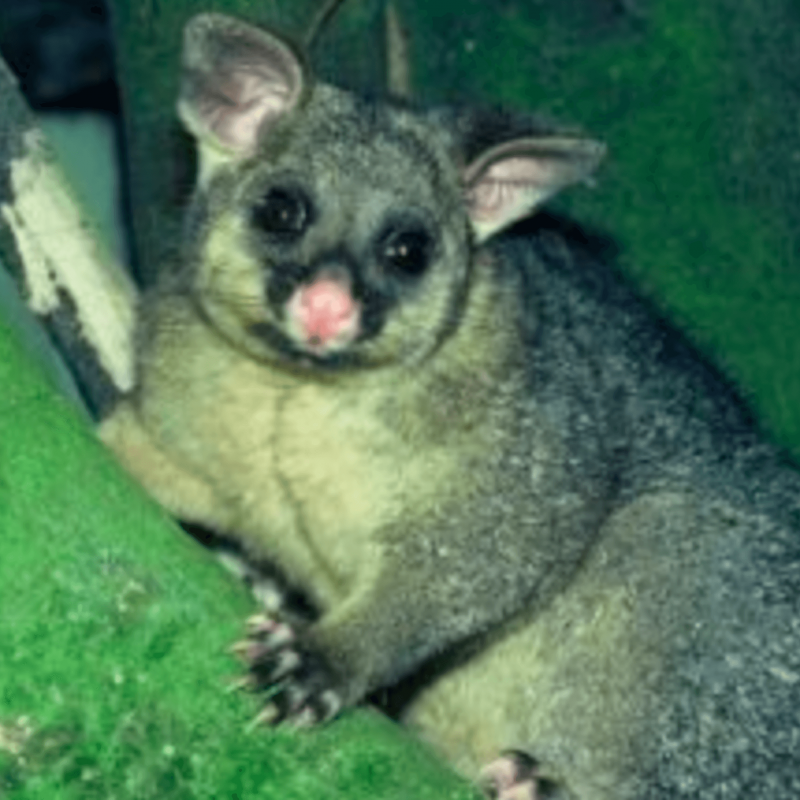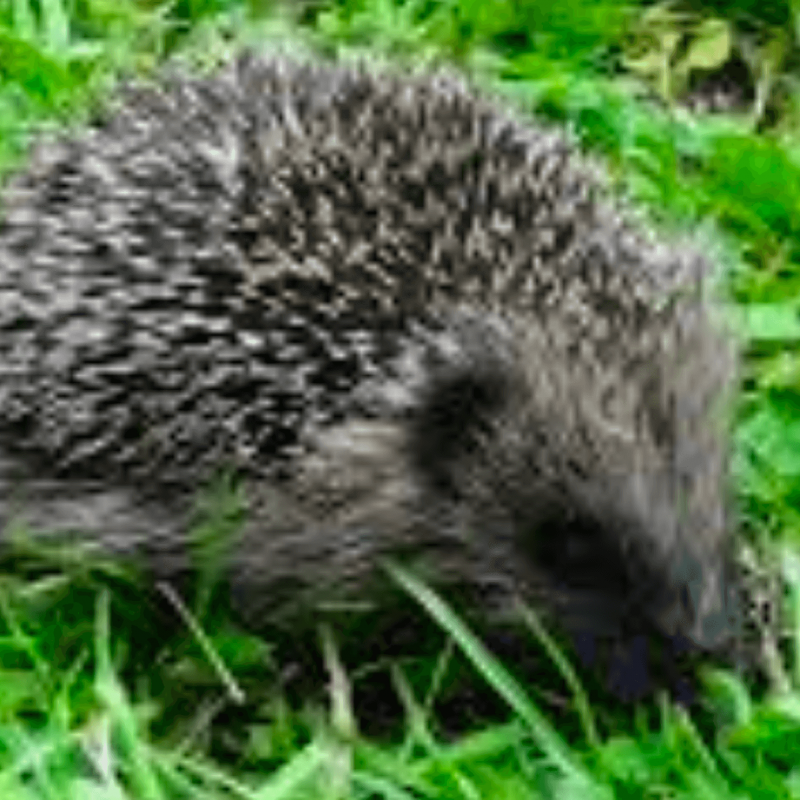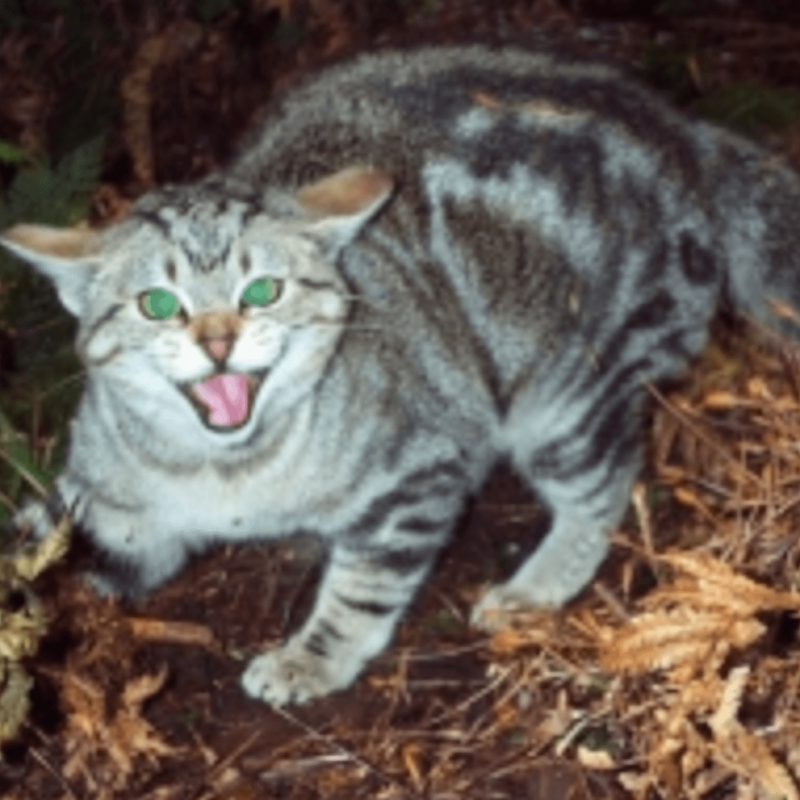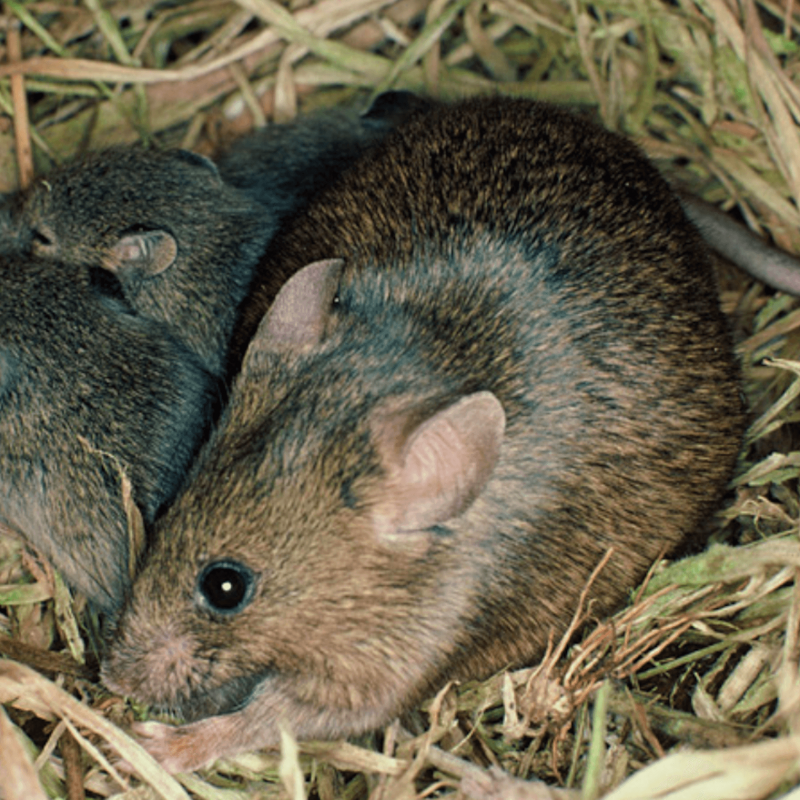Three species of rats live in New Zealand. All of them are introduced pests and threaten the long-term survival of native species.
The ship rat (Rattus rattus) is the most commonly found rat in New Zealand and is the smaller of the two European rat species. It has a tail that is longer than its body, and ears that cover the eyes when pressed forward. Ship rats are widespread around New Zealand on the three main islands and on many offshore islands. They are found in many different habitats around New Zealand and are widespread in lowland podocarp-broadleaf forests. They are good climbers, so they can access many bird nests high in trees.
The Norway rat (Rattus norvegicus) is different from the ship rat in that the tail, which is about 18 cm long, is thick and shorter than the body, which is about 20 cm long, and its ear doesn't reach the eye when pressed forward. Norway rats are more typically associated with human activity and found in urban areas but they have also existed on more than 60 offshore islands where they are large enough to kill burrow-nesting adult seabirds and eat their eggs and chicks.
Successful eradication programes have occurred on several offshore islands in the last decade, removing the threat of ship and Norway rats from the ecosystem.
Kiore is the Māori name for the Pacific or Polynesian rat (Rattus exulans). An adult kiore is approximately 4 cm shorter than an adult ship rat, but looks very similar and the two species are often confused. The tail of a kiore is shorter than the body. They were once found all around New Zealand and on many offshore islands. On the mainland they are now only found in the south of the South Island. Along with other prey, kiore have a significant impact on large flightless invertebrates living on the ground, such as our landsnails or weta laying their eggs.
Kiore are unique because of their association with the migration of Polynesians throughout the Pacific, and their cultural and spiritual values to some iwi Māori. This cultural interest in kiore is recognised by DOC when planning eradication programmes for invasive species.
All the rats are omnivores – eating birds, seeds, snails, lizards, fruit, weta, eggs, chicks, larvae and flowers. Their varied diet makes them competitors with native wildlife for food sources.
Photo DOC


